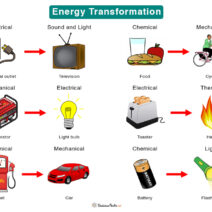As the world wrestles with the consequences of climate change, it becomes increasingly imperative to scrutinize our everyday choices and their far-reaching implications. One of the most ubiquitous elements of modern life—automobiles—warrants a thorough examination. Are we unwittingly driving towards disaster? The climate cost of our cars is more profound than one might assume.
Cars have become synonymous with freedom, expediency, and status. However, this emblem of modern civilization carries an environmental bill that we can no longer afford to ignore. From the moment a vehicle rolls off the assembly line to its eventual disposal, it imposes a significant burden on the planet. The journey begins with the extraction and processing of raw materials. Resources such as steel, rubber, and plastics are vital to car production. The mining and extraction processes for these materials deplete natural resources, disrupt ecosystems, and emit significant amounts of greenhouse gases (GHGs).
Manufacturing embodies one of the most energy-intensive processes in industrial society. It is here that the carbon footprint of any vehicle is substantially shaped. The energy used in production—a mixture predominantly derived from fossil fuels—has profound ramifications. This stage generates a considerable amount of carbon dioxide, one of the principal contributors to global warming. In fact, estimates suggest that the production of a single vehicle can release up to 24 tons of carbon dioxide equivalents into the atmosphere before it even hits the road.
Once operational, cars become continuous contributors to atmospheric degradation. The combustion of gasoline or diesel fuels generates energy, powering our commutes and adventures but simultaneously releasing carbon dioxide alongside other deleterious pollutants such as nitrogen oxides and particulate matter. This results in a dual crisis: not only does each mile driven exacerbate climate change, but it also harms air quality, a public health dilemma that affects millions globally.
Transportation contributes approximately 14% of global greenhouse gas emissions, with personal vehicles responsible for nearly three-quarters of that figure. The sheer volume of private cars on the roads—over a billion—and the penchant for short, inefficient trips underscore our reliance on fossil fuel-dependent vehicles. In urban areas, traffic congestion exacerbates this predicament. As vehicles idle or crawl at a snail’s pace, fuel consumption rises, effectively transforming what could be a brief jaunt into an environmental catastrophe.
Moreover, the phenomenon of urban sprawl is tightly interwoven with our car dependence. Cul-de-sacs and suburban enclaves advocate a lifestyle that prioritizes car travel over public transport or active mobility. This spatial design not only amplifies emissions but also fosters a culture of isolation and sedentary behavior. The automobile not only dominates our lanes but also dictates how we structure communities and interact with our surroundings.
Many may presume that advancements in automotive technology provide a salve for these self-inflicted wounds. Electric vehicles (EVs) present a promising alternative, heralded for reducing tailpipe emissions. As gratifying as it may seem to embrace this innovation, it’s vital to delve deeper into the lifecycle of these vehicles. The very production of EV batteries requires the extraction of minerals such as lithium, cobalt, and nickel—activities that can leave devastating ecological footprints if not managed sustainably. Additionally, while the operation of an electric vehicle produces no direct emissions, the source of electricity still matters: coal-powered grids negate many of the environmental benefits touted by this technology.
Public policy critically shapes our transportation landscape. Incentives for electric vehicle adoption and investments in alternative transportation options demonstrate a shift in governmental approaches. Countries and municipalities are exploring infrastructure enhancements designed to facilitate cycling, public transit, and pedestrian-friendly urban planning. However, transient policy changes often fall prey to the fervor of political cycles, creating an inconsistency in progress. Mere regulatory frameworks are insufficient; a paradigm shift is needed.
As consumers, the responsibility does not solely rest on legislative measures. Each decision, from commuting habits to vehicle choices, reverberates across the environmental spectrum. Carpooling, public transport, cycling, and walking are practical alternatives that can mitigate our collective carbon footprint. Car-sharing platforms and ride-hailing services provide opportunities to reduce our dependence on private cars. Embracing shared mobility, along with a robust public transportation system, can help us steer towards a more sustainable future.
Changing societal perceptions about car ownership is paramount. The prevailing narrative often glorifies automobile ownership, equating it with personal liberty. Yet, the climate emergency begs us to reinterpret freedom. True emancipation may lie in our ability to connect, not just through the metal and rubber of our vehicles, but through sustainable practices that honor our environment. This shift in perspective entails acknowledging the intricate links between individual actions and global consequences.
As we confront an escalating climate crisis, the urgency to rethink our dependence on cars is paramount. Driving towards disaster is not an exaggerated metaphor but a stark reality. The cumulative impact of millions of personal vehicles on our ecosystems is immense, and the time has come to decisively alter our course. The intersection of technology, policy, and personal choice will determine how we navigate this precarious juncture. By challenging our assumptions and adopting innovative solutions, we can chart a course toward sustainable living. The road to recovery is fraught with challenges, but it’s a journey we must embark upon—together.






